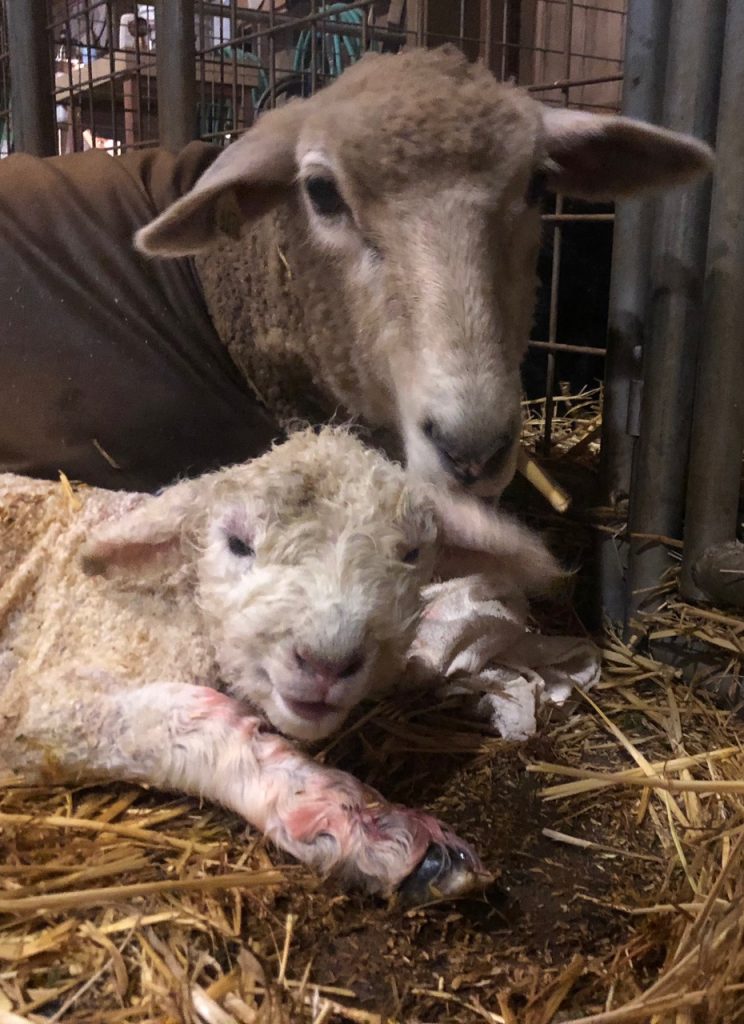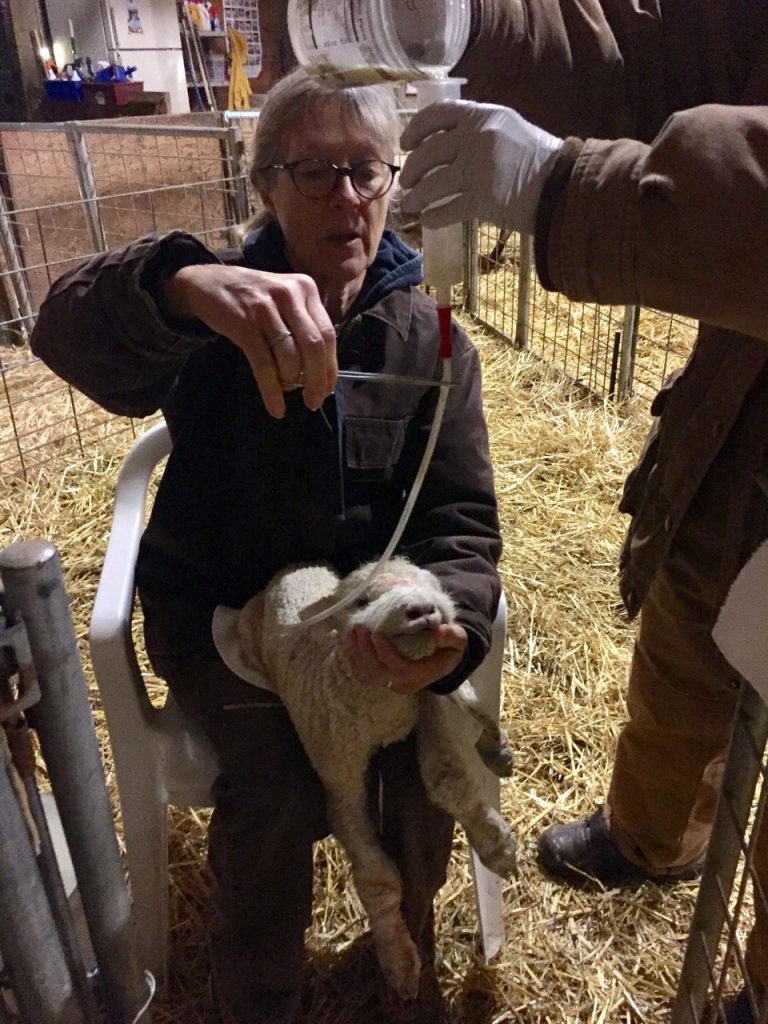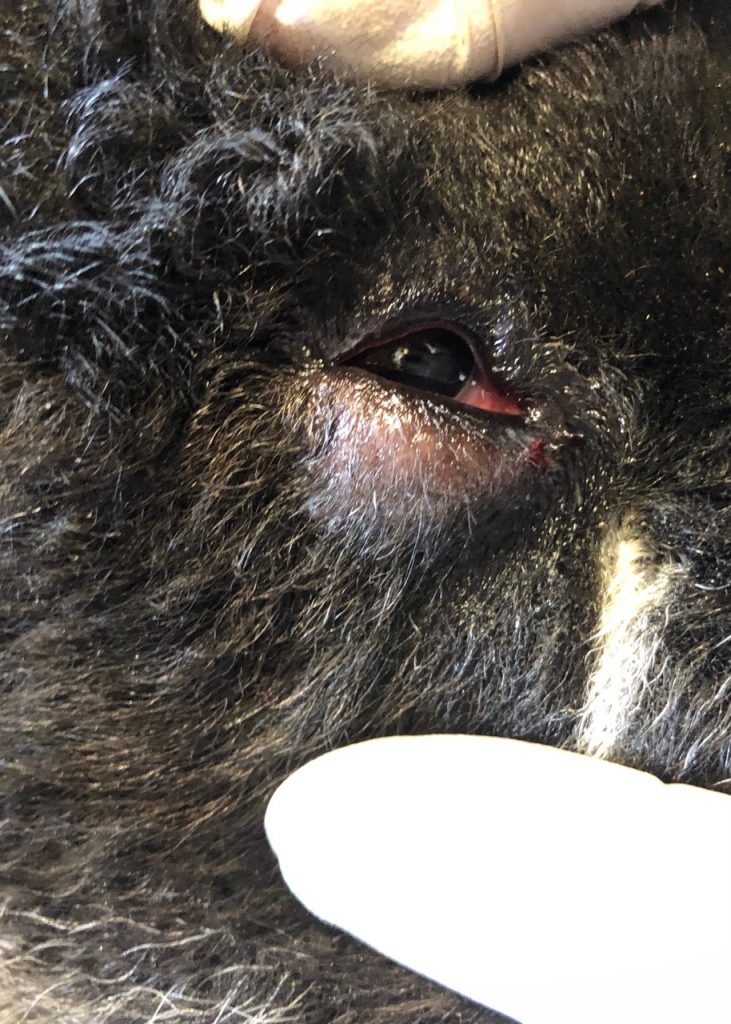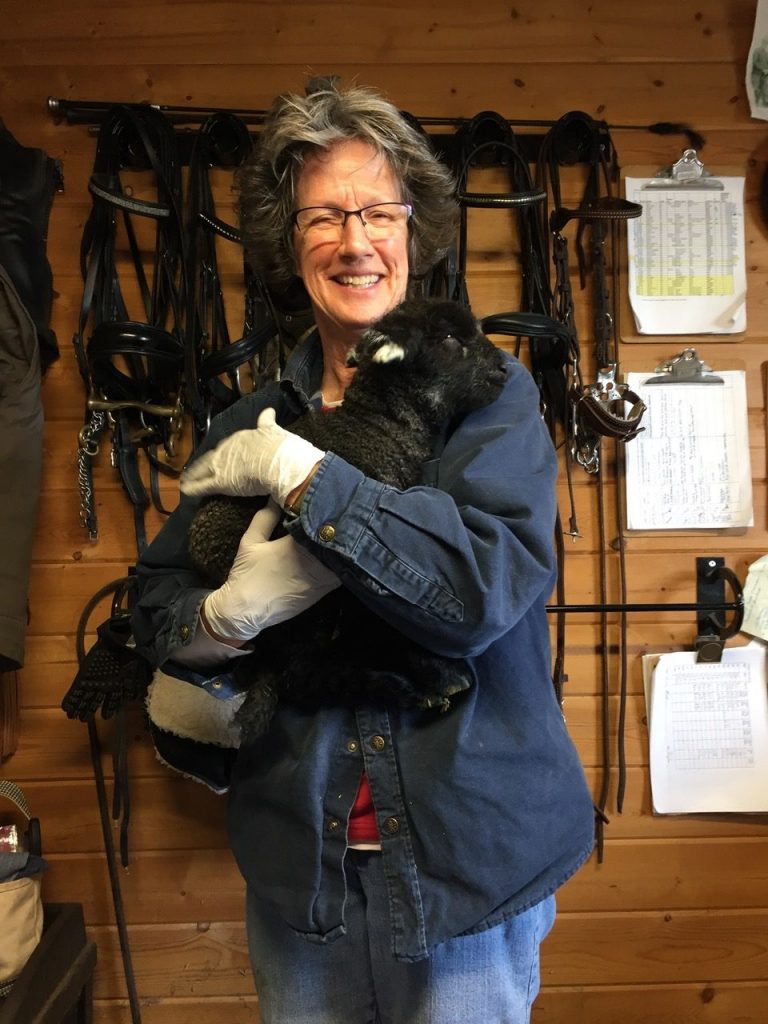Today was one of those lambing days that began and ended with procedures I hate having to do but which are sometimes necessary.
Linda and I were awakened at 5:00 am by a call from the barn. Having just gone onto Daylight Savings Time, this really felt like the middle of the night! Melinda had found Gold Rush in labor, and she was showing a head but no feet. Lambs generally can not be born with just the head and can get stuck that way for a long time. The head swells and sometimes the lamb can die. Melinda feared this lamb was dead, as it was showing no signs of life. Linda and I got dressed and rushed to the barn. When a lamb is being born with only the head showing, you need to push it all the way back in to the uterus and find the front legs, in order to get it out. If the head is very swollen and the ewe is pushing hard with labor, this can be very difficult! We were dreading what lay ahead.

But when we got to the barn, Melinda had good news: one front foot had appeared. The lamb’s head was swollen and the tongue was protruding and swollen as often happens when the head is out for a long time. Lambs really look awful when this happens, and can look dead even when they are still alive. We pulled the lamb and it was alive: a huge girl, 14.5 pounds. She was vigorous and breathed well, but her face was squished and with her swollen tongue, she couldn’t nurse, so we put in a stomach tube for her first colostrum-meal. Tubing a lamb always makes me nervous. The first time I watched a friend tube a lamb, she got the tube into the lung by accident, poured the milk in and killed the lamb. It was a horrible shock to me and I’ve never forgotten it. I have tubed countless lambs at this point, and have never gotten the tube into the lung. If you do it carefully and mindfully, it is not difficult to do right. Still it makes me nervous. By the time we were tubing the lamb, it was 6:30. Last night I had set my alarm to wake me up at 6:30, so it went off in my pocket, with the chorus from Tannheuser. We couldn’t stop the tubing at that point, so this lamb received her first meal with a rousing operatic chorus as accompaniment. With a meal in her belly, she had time to recover from her traumatic birth, and tonight mother and lamb are doing well.

This afternoon we ended the day with another of my least-favorite procedures, injecting a lamb’s eyelid to correct a condition called entropion. This is when a lamb’s lower eyelid is rolled under, so the lashes scrape the eye. It causes the eye to fester and water, and if not corrected can make the lamb blind. We have had a few cases in our East Friesians over the years, but it is more common in wooly-faced breeds, so we have had more cases in our Romney lambs. It has a hereditary component, so we generally don’t save affected lambs for breeding stock. Sometimes we can correct it by unrolling the eyelid and holding it, but Scout’s lamb Cadette had a bad case in both eyes and although Linda had been holding her eyelids for a half-hour at a time, they continued to roll.
Linda’s dad, my uncle Joe, used to correct entropion by cutting a piece out of the lower eyelid with scissors, causing the eyelid to scar outward and correcting the roll. These days vets use an injection technique instead. I had learned the technique from Dr Dotti years ago. You first inject a little lidocaine into the eyelid to numb it, then once it is numb, insert another needle and inject a cc of antibiotic. The liquid puffs the eyelid up like an innertube, correcting the roll. The lamb looks like it’s been in a fist-fight, but by the time the liquid is absorbed and the swelling goes down, the eyelid’s tendency to roll has been corrected.

It is scary to try to inject the eyelid of a lamb that is struggling against being held, and I went on YouTube to find a video showing the technique for holding the lamb firmly. We all studied the video, then with Melinda and Linda holding the lamb, I carefully injected both eyes. Melinda even managed to snap a few photos with one of her hands. Whew! All went well.


